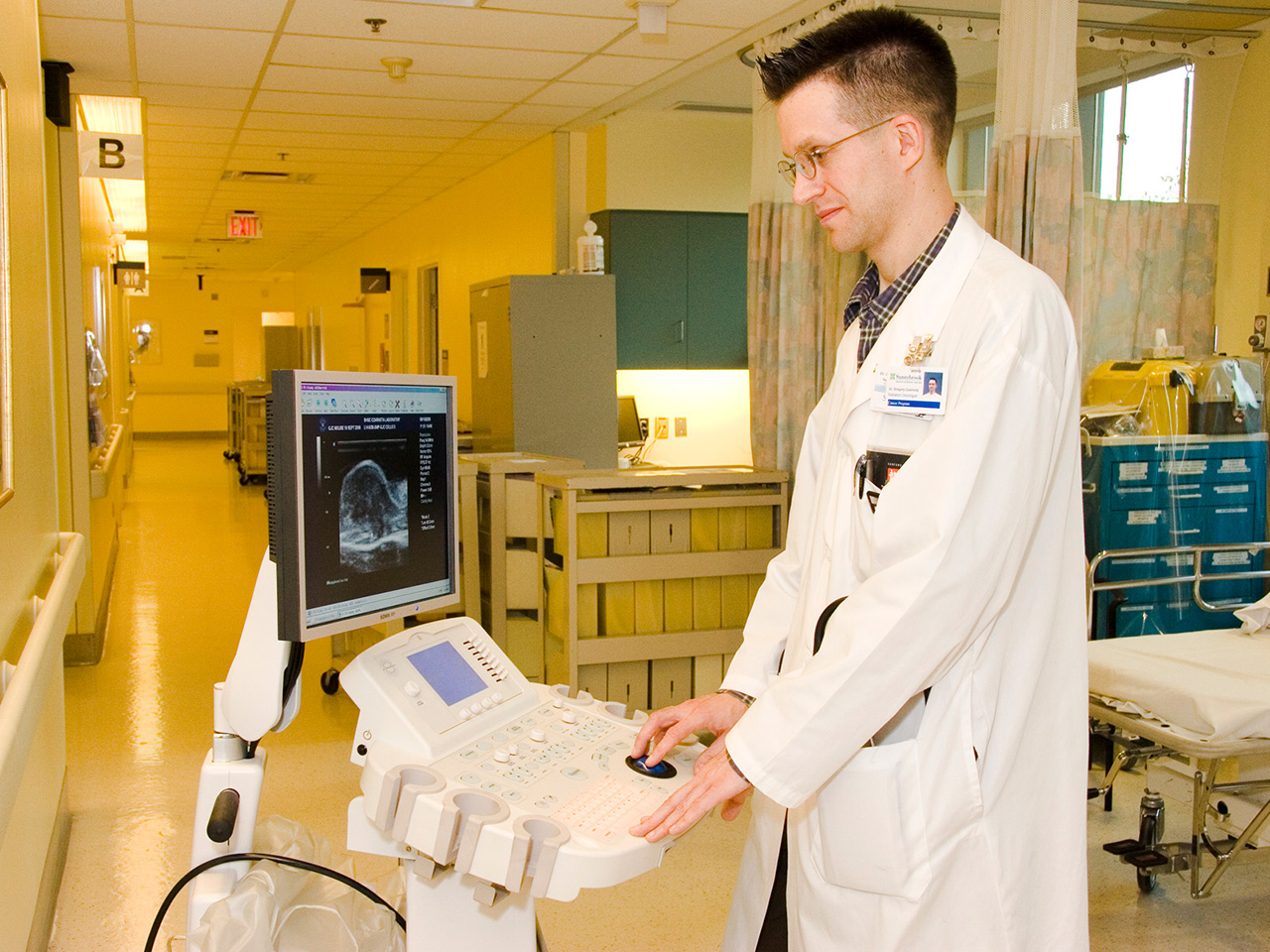Translation in collaboration
Moving research results into the clinic requires collaboration between scientists and clinicians. But convincing busy MDs that basic research is interesting and potentially useful can be difficult. It's less challenging with clinician-scientists like Dr. Greg Czarnota, an imaging researcher at SRI and oncologist at Toronto Sunnybrook Regional Cancer Centre (TSRCC).
Clinician-scientists have a valuable perspective on what research advances are needed in the clinic and what science can offer to patients. They are desirable collaborators for scientists focused on translation, like Dr. Kullervo Hynynen, and can offer the kind of partnership—in Czarnota's case, using ultrasound imaging to monitor focused ultrasound surgery in breast cancer—that drew Hynynen to the multidisciplinary environment of Sunnybrook. Says Hynynen, "The clinical collaborations are key to what I want to do."
Czarnota took an unusual and difficult path to becoming a clinician-scientist. While completing his PhD at the University of Toronto in the mid-1990s, he made a bet over a round of beer that he could detect a special form of cell death using ultrasound (though ultrasound was outside his area). After some late-night experiments with equipment grabbed from a clinic and cells from a culture lab at the then Ontario Cancer Institute (OCI), Czarnota and Dr. Michael Kolios found they could indeed detect cell death with high-frequency ultrasound. Surrounded by patients at OCI, Czarnota saw the potential of the discovery in tracking antitumour therapy, and he embarked on nine years of study with the aim of implementing his discovery. While most clinician-scientists complete an MD and then a PhD, often much later, Czarnota took the reverse route, thereby keeping his science active. Of returning to student life, he says, "The hardest thing was keeping the research going while in medical school and residency. I was stretched to the limits." Stretched, but he put in the hours and did the work.
In 2003, established at OCI and working with Kolios, Czarnota discovered he could detect cell death with low-frequency ranges of ultrasound, opening the possibility of widespread clinical implementation that wouldn't require expensive and complicated high-frequency equipment. The next year, Czarnota moved to Sunnybrook, attracted by its mix of biologists and physicists, and SRI's patient-focused relationship with TSRCC.
In 2006–2007, he plans to conduct a clinical trial with Hynynen, monitoring cell death during focused ultrasound surgery in patients with locally advanced and recurrent breast cancer. "These patients have poor outcomes and so can potentially derive the most benefit from new treatments," Czarnota explains. "It's an ideal situation to marry what Kullervo is doing with therapeutic ultrasound with what we're doing monitoring cell death." The collaboration will also include SRI senior scientist Dr. Peter Burns; Burns's team will use microbubble techniques he pioneered to image tumour vessels dying at the same time Czarnota and his group monitor cells dying. Together, they hope to provide inexpensive, highly accurate, real-time monitoring of Hynynen's tumour ablation techniques in a large population that desperately needs better treatments. "It looks like it will be a very good collaboration," says Czarnota.
For Hynynen, there are two key elements in a good partnership: complementary scientific expertise and compatible personalities. He says, "There's no point collaborating with people who have expertise but no desire to do the work. I've seen plenty of that — lots of good ideas but no time to do the work." If Czarnota's history is a marker, his collaboration with Hynynen will be worth hearing about.
PDF / View full media release »


